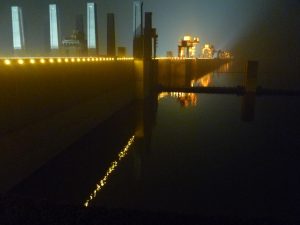By Sudha Ramachandran

China’s plans to build a hydropower dam across the Yarlung Zangbo River in Medog County in the Tibet Autonomous Region has evoked concern in India and Bangladesh, the lower riparian countries.
Indian officials are warning that China could use the dam to control the flow of the river’s water into northeast India, either shutting off water supply to create a scarcity or suddenly releasing it to trigger flash floods. In Bangladesh, experts fear that China could be damming the water to divert it, causing water scarcity downstream.
The Yarlung Zangbo runs eastward through southern Tibet for around 1,600 kilometers and then swerves southward at the Great Bend to enter India. In India, it flows through the states of Arunachal Pradesh, where it is known as Siang, and Assam, where it is called the Brahmaputra, before flowing into Bangladesh. After being joined by the Ganga in Bangladesh, it empties its waters into the Bay of Bengal.
The proposed dam is likely to be constructed at the Great Bend. According to Yan Zhiyong, chairman of the Power Construction Corporation of China (POWERCHINA), which will be constructing the dam, “the 60 million kWh hydropower exploitation at the downstream of the Yarlung Zangbo River could provide 300 billion kWh of clean, renewable and zero-carbon electricity annually,” and would “play a significant role” in enabling China to achieve “a carbon emissions peak before 2030 and carbon neutrality in 2060.” Its hydropower generation is expected to be three times that of the Three Gorges Dam, which has the largest installed hydropower capacity in the world.
Yan has described the dam project as “a historic opportunity for the Chinese hydropower industry.” But downstream countries are less optimistic. There are apprehensions that the Chinese dam will could have “far-reaching impact on northeast India’s water security,” even give Beijing “a chokehold on India’s economy.”
Some of these fears seem a bit excessive.
After all, the Brahmaputra’s volume is determined not so much by the water flowing into India from Tibet as it is by monsoon-fed tributaries of the river that originate in Arunachal Pradesh. This means that even if China were to hold back water at the dam it plans to build at the Great Bend, it would not seriously impact the water flow of the Brahmaputra.
Moreover, the proposed dam will be a run-of-the-river hydropower project, and thus will not require large amounts of water to be stored in a reservoir.
“When it comes to use and development of cross-border rivers China always acts responsibly,” Chinese foreign ministry spokesperson Hua Chunying told a media briefing in Beijing. The Chinese government claims that lower riparian countries need not have “any anxiety” about its dam construction. It has promised to have “good communication” with them on the matter.
However, such assurances are unlikely to allay Indian concerns over the planned dam.
For one, this is not the first dam the Chinese has slated for construction on the Yarlung Zangbo, but the fifth. In addition to the Zangmu hydropower project that began operations in 2015, dams are being constructed at Dagu, Jiexu, and Jiacha. It is likely therefore that more dams will follow the proposed Great Bend project in the coming years.
Moreover, the Chinese have not been transparent about their dam-building activity. For instance, Beijing repeatedly denied plans to build a dam at Zangmu for several years, then went ahead with the construction of a hydropower project there.
This opacity over its dam projects has understandably fueled suspicion in India that the Chinese, while maintaining that the new dam on the Yarlung Zangbo is a run-of-the-river project designed for hydropower generation alone, will eventually divert water for agriculture and other purposes.
Meanwhile, India is steaming ahead with plans for its own hydropower and water-storage projects in the northeast of the country. It has announced plans to construct a 10-gigawatt hydropower project in Arunachal Pradesh, for instance. The proposed project will not only serve to generate power but also to store water, ostensibly “to offset the impact of Chinese dams on flows.”
Bangladeshi experts say that the impact of the Chinese dam will be greater on India than on Bangladesh.
However, as the country that is the furthest downstream, it is Bangladesh that will bear the brunt of the dam building activity of both China and India.
No comments:
Post a Comment